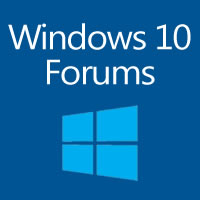Hello
In Windows Explorer, are there any utilities that allow me to "archive" individual files in situ?
==> i.e. How can I hide individual older files them from view without moving them away... and (ideally) still to only be able to see them if I click some button?
Background
I have far too many old, out-of-date data files in my folders. So I want to flag them for "archive" to make them disappear from view. But there are occasional times when I want to find very old files, so I don't want to completely delete them. Likewise I want to keep my overall folder structures so I don't want move almost everything off somewhere and then be forced to re-create my folders from scratch.
With thanks
J
PS I also still want to sort my folders so that first the folder names are appear alphabetically (for ease of navigation), and then the files appear with the most recently modified files appearing first. See this still unresolved thread:

 www.windows10forums.com
www.windows10forums.com
In Windows Explorer, are there any utilities that allow me to "archive" individual files in situ?
==> i.e. How can I hide individual older files them from view without moving them away... and (ideally) still to only be able to see them if I click some button?
Background
I have far too many old, out-of-date data files in my folders. So I want to flag them for "archive" to make them disappear from view. But there are occasional times when I want to find very old files, so I don't want to completely delete them. Likewise I want to keep my overall folder structures so I don't want move almost everything off somewhere and then be forced to re-create my folders from scratch.
With thanks
J
PS I also still want to sort my folders so that first the folder names are appear alphabetically (for ease of navigation), and then the files appear with the most recently modified files appearing first. See this still unresolved thread:

Can Win Explorer show: A) folders sorted alphabetically, then below the folders: B) Files by date modified ?
Hello How can I set up my Windows Explorer view such that in the right hand pane: 1. At the top of the pane, I see the list of folders. Ideally this should be sorted in alphabetic order [or else order in which last accessed?] 2. Then I want to see my files sorted by date last modified (or...
